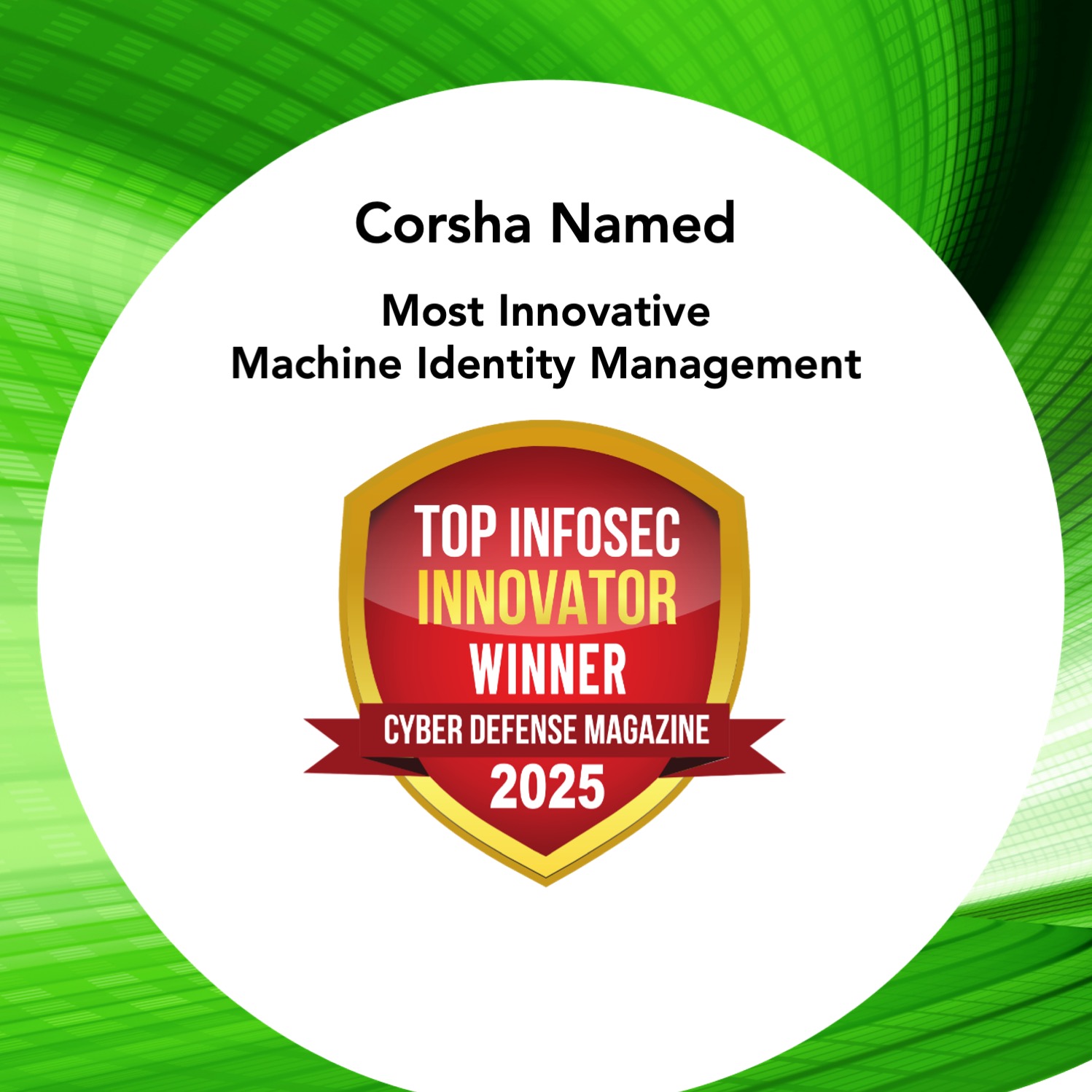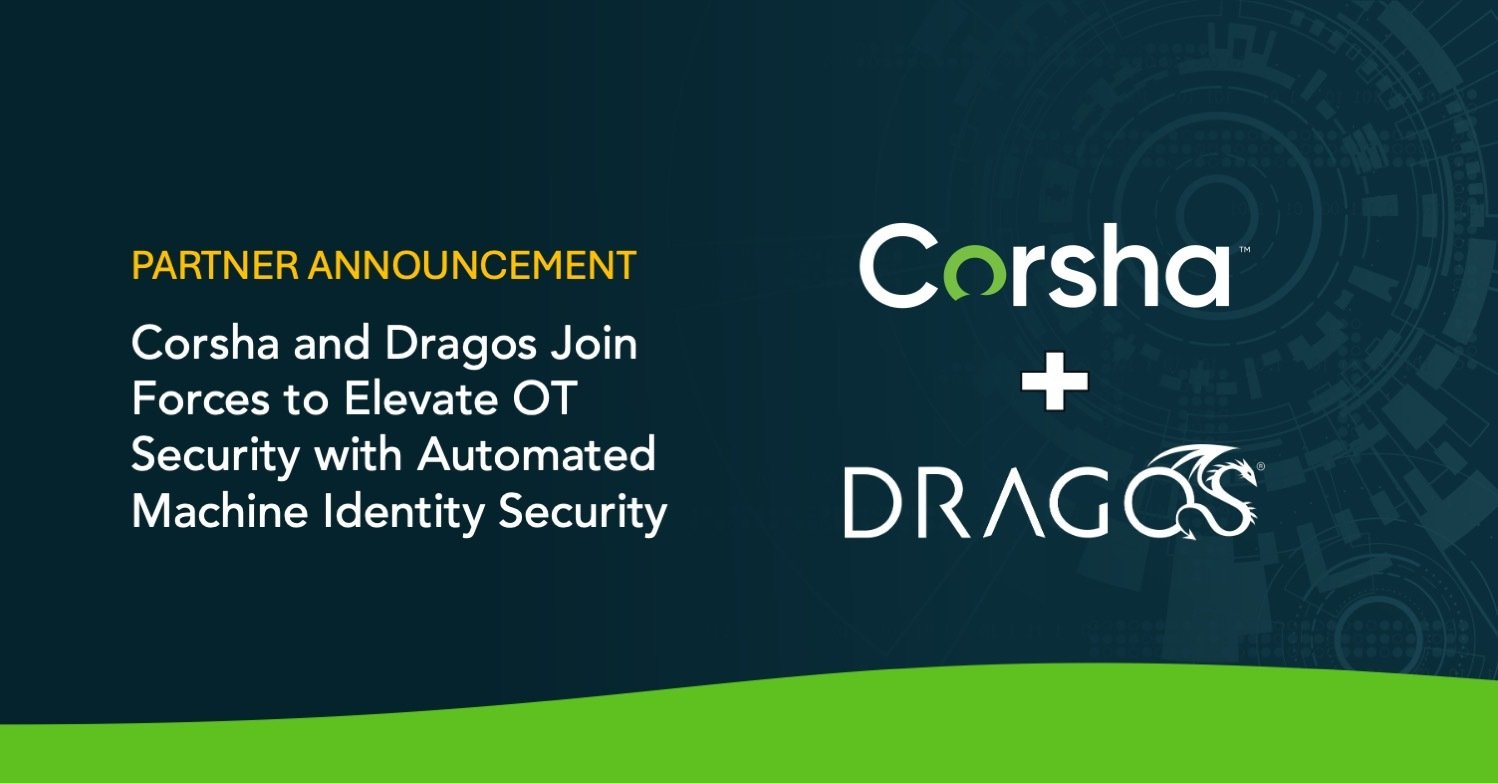SOLUTIONS
Secure Automation and Data Movement for a Hybrid World
Level up critical API-driven communications from anywhere to anywhere

THE CHALLENGE
API traffic makes up over 90% of traffic across our networks and the cloud. Yet IAM for automated API- driven automation and data movement is weak.

Add to that the communication happens across sprawling hybrid environments in numerous clouds and on-premise. This is where adversaries are capitalizing and APl attacks are exploding and projected to increase < ADD A STATISTIC>.
API secrets, tokens, certificates = Identity and Access Management.
The time is now to elevate API Identity and Access Management and pin automated traffic to only trusted machines.
The Corsha Solution
Corsha builds and manages identities (not secrets) for every trusted API client in your core application infrastructure. Easily provision cryptographic identities, automatically rotate them, used one-time-use credentials, start/stop access in real-time, logically manage machines.
Automate service-to-service communication with a Kubernetes-native and platform-agnostic approach. Uniformly provision and manage identities for services, workloads, virtual machines in the cloud with support for Kubernetes, Service Meshes, Docker containers, and more. Corsha ensures your data only flows to and from trusted services, no matter where they are deployed.
Corsha can provide a dynamic layer of identity and one-time-use credentials to service account tokens and PK| certificates, pushing past these static factors and limitations of Auth 2.0 for client credentia grants.

Control your code and the products you build as they traverse SaaS platforms and hybrid environments to get from code to cloud.
-
Pin communication in CI/CD Pipelines
Implement identity verification and continuous authentication across platforms like Github, Jenkins, and Artifactory layering Corsha's MFA on top of simple builtin API tokens and IP allowlisting.
-
Preserve Artifact Integrity
Strengthen API connections to repositories like Artifactory with robust authentication and access control. Ensure the safety of your digital assets and maintain control at every step.
.png?width=1179&height=712&name=image%20(4).png)
Your Security Operations Center is more than likely coming in and out of your enterprise network to third-party services like Splunk, ServiceNow,CrowdStrike, SwimLane, and more. There may be only so much that you can turn up the dial on API Identity and AccessManagement with these third party apps.
-
Restrict access to Third Party Apps from pinned Internal Services
Use simple, drop-in proxies that enforce one-time-use credentials instead of dealing with secrets hygiene or ever-growing IP allowlists. Dynamic apps and services deserve dynamic identity and access control.
-
Regulate access between systems and services in real-time
Start and stop access to third-party apps in your SOC for a machine or group of machines with the push of a button in Corsha's control plane.
-
Respond to threats and events in your SIEM in real-time
If a security event is triggered for a workload, temporarily or permanently cut off its API access to other systems or services. Mitigate any further impact this compromised workload has on your security infrastructure.

.png?width=448&height=448&name=select%20(1).png)
Level 0 is the physical devices that form the foundation of the equipment, such as motors, pumps, sensors, and valves.
.png?width=448&height=448&name=select%20(1).png)
Level 1 is the systems that supervise and direct the devices at Level 0, including Programmable Logic Controllers (PLCs), Remote Terminal Units (RTUs), and Intelligent Electronic devices (IEDs).
.png?width=448&height=448&name=select%20(1).png)
Level 2 involves devices that manage the overall processes of the system, such as human-machine interfaces (HMIs) and SCADA software, which enable human operators to monitor and control the system. These are often laptops/ workstations or touch pendants.
.png?width=448&height=448&name=select%20(1).png)
Level 3 facilitates the management of production workflows and includes batch management, manufacturing operations management (MOM), manufacturing execution systems (MES), and data historians. The Industrial Demilitarized Zone (IDMZ) serves as a buffer between the IT and OT networks. The IDMZ helps prevent infections within the IT environment from spreading to OT systems and vice versa.
.png?width=448&height=448&name=select%20(1).png)
Level 4 encompasses systems such as Enterprise Resource Planning (ERP) software, databases, email servers, and other logistics-related systems that manage manufacturing operations and provide communication and data storage.
.png?width=448&height=448&name=select%20(1).png)
Finally, Level 5 is the enterprise network, which is not an ICS environment but collects data from ICS systems for business decisions.
News
machine identity, zero trust, Manufacturing, ATO

Article
Corsha Advances Machine Identity Provider (mIDP) to Secure Connectivity and Data Across Industrial Manufacturing Systems for US Airforce
READ MORE
Article
Corsha Named Most Innovative Machine Identity Management in Cyber Defense Magazine’s 2025 InfoSec Awards
READ MORE
Article
Corsha and Dragos Join Forces to Elevate OT Security with Automated Machine Identity Security
READ MORETabs are an effective way to organize information on a website page when there is a large amount of content that needs to be separated into distinct categories. Label your tabs with one or two words that define each category of information.
When styling your tabs, highlight the selected tab by giving it a color that differs from your unselected tabs, so that it's easy for your visitors to navigate.
Tabs are an effective way to organize information on a website page when there is a large amount of content that needs to be separated into distinct categories. Label your tabs with one or two words that define each category of information.
When styling your tabs, highlight the selected tab by giving it a color that differs from your unselected tabs, so that it's easy for your visitors to navigate.